When Nicholas and Helena Roerich, with their son George, set out in 1923
on an epic expedition across the rugged mountainous terrain of Central Asia, at
that time an almost
unknown region to Westerners, they were by no means the first explorers from the West to do so. The Roerich venture, however, was unique in that it was entirely directed and choreographed by their spiritual Teacher, a Tibetan Buddhist adept known as the Master Morya. As one of Helena Blavatsky’s mysterious “Mahatmas” or Ascended Masters who were said to inhabit the fabled land of Shambhala, Mahatma Morya’s worldview was hieratic and magical. Hence, when he enjoined on the Roerich family two secret goals which were to dominate their travels an extraordinary aura of both transcendence and confusion was cast over the whole expedition, lifting it onto an altogether more rarified level than other such ventures of the time.
unknown region to Westerners, they were by no means the first explorers from the West to do so. The Roerich venture, however, was unique in that it was entirely directed and choreographed by their spiritual Teacher, a Tibetan Buddhist adept known as the Master Morya. As one of Helena Blavatsky’s mysterious “Mahatmas” or Ascended Masters who were said to inhabit the fabled land of Shambhala, Mahatma Morya’s worldview was hieratic and magical. Hence, when he enjoined on the Roerich family two secret goals which were to dominate their travels an extraordinary aura of both transcendence and confusion was cast over the whole expedition, lifting it onto an altogether more rarified level than other such ventures of the time.
By the term 'magic' I am referring to the
technology of the higher dimensions, the ritual manipulation of the powers and
structures of the Intellectual world, the world of Higher Mind, according to
exactly the same kind of rational activity by which our scientists and
technocrats manipulate the powers and structures of the physical world. Rulers
of men, such as high initiates, must be magicians. Their field of operations may
be ideational but the effects, flowing invisibly into the physical world, are
supremely efficacious, sometimes swaying the course of events for centuries to
come. Seen in this light, Master Morya’s role in the many mysterious and
imponderable aspects of the Roerich expedition, especially its transcendental
concept of Shambhala, emerges as central.
Professor Roerich (1874 – 1947) was an
archaeologist of note, and ostensibly the purpose of the Central Asian venture
was to be his search for the origins of human culture, “the earliest fruits of
man’s spiritual aspiration,” as well as historical monuments of interest; but
the academic dimension, though genuine, masked his and Helena’s passionate
devotion and one-pointed service to the quest for Shambhala. The family set off
with this hidden agenda in view: to find the mystical paradise said to be hidden
somewhere in a verdant valley in High Asia, with the intention of making it
better known to the world. They had, however, been entrusted by the Teacher with
an even more covert mission. On arriving in the Altai mountains, traditionally
regarded as part of Greater Shambhala, Nicholas was empowered to take possession
of a vast region taking in part of southern Siberia, Mongolia and the Gobi and
there to establish a vast new Eurasian state, thereafter to be known as the “New
Country” or the “New Russia”. It was to be an empire based on the teachings of
the Buddhist Kala chakra Tantra and ruled by the Tibetan Panchen Lama, with
Nicholas Roerich himself as administrator.[1] Clearly intended to be a Pan-Mongolian,
Tibetan-style theocracy based on the principles of Asia’s most advanced
metaphysical and magical teachings, it was to be in effect Shambhala renamed,
brought up to date and given official international recognition.
The project, however, never came to
fruition. For one thing, the Panchen Lama, whose whereabouts were at that time
unknown, was one of the two competing rulers of the Tibetan theocracy who had
already fled into exile in Beijing after a deadly political dispute with the
then Dalai Lama in Lhasa, and there is no indication that Nicholas Roerich ever
caught up with him. In any case, so politically sensitive and unlikely was the
whole project in a region embroiled in armed international rivalry that it may
well have been – perhaps unknown to Nicholas - a symbolic gesture only, one
characteristic of the Master’s elliptical approach to things. Possibly it was
only intended to point towards a time when an enlightened Greater Russia – the
New Russia or New Shambhala - might join with China and India to lead the
nations in a new spiritual World Order. But although the ambitious plan did not
eventuate, in the event the Roerichs succeeded in putting Shambhala on the map
to a degree unprecedented by any explorers before them. Indeed, as a beautifully
crafted operation specifically designed to draw the attention of the outside
world, the Roerich expedition was, I believe, outstanding among the great events
of the twentieth century. But did the enterprise have an even deeper purpose, a
still more occult or magical dimension than any of the above?
The Roerich family, prominent Buddhist
luminaries in Helena Blavatsky’s Theosophical Society, were refugees from the
Russian Communist revolution. Nicholas Konstantinovich Roerich, émigré, savant,
artist, archaeologist, explorer and mystic and a prominent member of the League
of Nations formed after the First World War, was already famous for his artistic
activities in the avant garde theatre and art world of London and Paris when he
and his family travelled to America and from there launched their first Asian
expedition. George (1902 –1960), their firstborn son of two, was already a
graduate in numerous languages in Harvard and the Sorbonne and, like his father,
a scholar of note. Helena Ivanovna Roerich (1879 – 1955), a beautiful and
sensitive woman born of a wealthy, aristocratic Russian family, was extremely
well-educated, a writer and spiritual teacher, as well as being possessed of the
psychic skills that enabled her throughout the expedition to channel Master
Morya’s guidance and instructions, as also his spiritual teachings on Agni Yoga,
the Yoga of Fire. This yogic system was a part of the Kala chakra Tantra, at
whose inmost heart were powerful kundalini practices regarded by the Master as
highly relevant to the dawning new Age.
The Roerichs’ caravan set forth from India
under horrifyingly harsh conditions on a journey through Central Asia that
lasted for four years and completely circumambulated the ring of mountain ranges
surrounding the Takla Makan desert. Living in tents, in a caravan of pack horses
led by indigenous guides, sometimes faced with the starvation and death of their
animals and guides, the family toiled across the deserts and through the eight
frozen mountain passes of Asia to (a) found the vast new Eurasian kingdom, the
New Russia, (b) find the Valley of the Immortals, and (c) bring back scientific
knowledge of importance. Nicholas was forty-seven years old and not strong; his
wife had never ridden a horse. Both had been delicate children given to
illnesses, and had lived always in the greatest European comfort. One can only
wonder at the motivation that impelled them to an undertaking requiring such
courage and sheer physical fortitude.
Eastern occultism was just then opening up
to the West, although still of little interest beyond the circles of the
European intelligentsia. The Roerichs were convinced that a new World Age was
dawning, and that only an outpouring of the high wisdom and creative energies of
the Mahatmas could bring peace to the planetary conflict and ignorance that they
saw all about them. Accordingly, the search for Shambhala was also the search
for the Hierarchy of the Ascended Masters.
Apart from the reports of two
seventeenth-century Jesuit missionaries travelling through the region, the
existence of Shambhala and the spiritual Hierarchy inhabiting it had been
virtually unknown to the Western world until the end of the nineteenth century,
when Helena Blavatsky mentioned sacred Shambhala in her best-known work, The
Secret Doctrine. The heart of Mother Earth, she declared, “beats under the
foot of the sacred Shambhalla.”[2] As a result of her researches, within
the next few decades a number of noted explorers had set forth to search for the
hidden Valley of the Immortals, but in vain. Called Aghartta or Agharti by some,
it was believed to be the origin of the Greater Mysteries and to be populated by
a hierarchy of spiritual seekers from the grade of Stream-Enterer to that of
Arhat, under the direction of a high being known as the Lord of the World.[3] The general conclusion was that the place was
so elusive that it must exist only on an etheric plane, or in catacombs beneath
the earth, or even beyond the earth altogether. It was a view endorsed by a high
lama with whom Roerich conversed in the course of his travels, and is still held
by many occultists today. “Great Shambhala is far beyond the ocean,” the lama
said. “It is the mighty heavenly domain. It has nothing to do with our earth.”[4]
But Roerich, more scientist than mystic,
would have none of it. “We know about the reality of the earthly Shambhala,” he
replied.
"We ourselves have seen a white frontier post of one of the three outposts of Shambhala. So, do not speak to me about the heavenly Shambhala only, but also about the one on earth; because you know as well as I, that on earth Shambhala is connected to the heavenly one. And in this link, the two worlds are unified."[5]
Confronted by this declaration, the lama
conceded the truth of Roerich’s statement. Nicholas had studied the Tibetan
mandala representing the mystic country, a diagram which shows Shambhala’s
geography as being constituted of an Outer Region surrounding an Inner Citadel.
Outer Shambhala is represented by a circle of eight separate mountainous
kingdoms, each with twelve principalities, surrounding an inner and more hidden
Shambhala, within which the spiritual King of the World reigns at the foot of
Mt. Meru, the Axis of the World. Roerich regarded this diagram as representing a
genuine earthly reality: the circle of eight kingdoms symbolized the eight great
mountain ramparts of High Asia surrounding a central region, while their many
hidden ashrams and monasteries, forbidden to the profane world, were physical
gateways to the subtle planes and to the Inner heavenly Shambhala, which could
be accessed only by a spiritual initiation. Indeed Master Morya had told
him:
Shambhala is the indispensable site where the spiritual world unites with the material world. As in a magnet there exists the point of utmost attraction, so the gates of the spiritual world open into the Mountain Dwelling… Jacob’s Ladder is the symbol of Our Abode.[6]
The whole mandalic scheme Roerich
understood to be a metaphorical expression of our planet’s living structure, its
formation about a generative centre or omphalos or sacred origin point which
remains pure and inviolate amid the travails of the rest of Earth. Shambhala,
the sacred centre through which the creative energies of the higher dimensions
issue forth exists, then, on all planes.
Records of the shamanistic Bon-po, the
first inhabitants of Tibet, claimed that long ago there had been a kingdom of
Shambhala, which the Bon-po knew as Olmolungring, stretching across the Takla
Makan Basin and taking in the ring of lofty mountain peaks that enclosed the
great Tsaidam desert: these mountains were the Altai Tagh and the Nan Shan
ranges to the north, the Humbolt Chain, the Kunlun, Pamirs and Trans-Himalayan
ranges further south, and the Karakorum and Tien Shan ranges to the west. By the
time the Mongol tribes from the East took over Tibet and appropriated the Bon-po
records, the kingdom had long since faded into myth, yet its story continued to
live on and was woven into the fabric of Tibetan Buddhism and the lives of the
people. Regardless of their nationality or religion, all the peoples of the
region believed that, forbidden to ordinary mortals, the sacred Valley of the
Immortals, the most hidden, inner Shambhala, was a place of peace and plenty
where sorrow, disease and old age were unknown. It was the original Eden, the
spiritual heart of the Earth. There great adepts lived, and there the Ruler of
the World reigned over all the different world faiths, uniting them under one
great primordial Teaching, that of the Kala chakra Tantra, the doctrine of the
Wheel of Time as taught by the highest and noblest minds in
Shambhala.
The Roerichs found that throughout High
Asia, Shambhala’s ashrams and monastic schools, hidden in secret valleys, were
the stuff of fireside tales of miracles, of saintly lamaist initiates, of the
promised coming of the fifth Buddha Maitreya and of the dawning Age of Fire.
Around the camp-fires, the Roerichs’ guides and bearers talked of little else
than the coming era of new energies promised by Rigden-jyepo, the World Ruler,
and how he would soon send his armies forth from Shambhala to vanquish his
enemies. The lama already quoted told Roerich:
A great epoch approaches. The Ruler of the World is ready to fight. Many things are being manifested. The cosmic fire is again approaching the earth. The planets are manifesting the new era. But many cataclysms will occur before the new era of prosperity. Again humanity will be tested, to see if the spirit has progressed sufficiently. The subterranean fire now seeks to find contact with the fiery element of the Akasa; if all good forces do not combine their power, the greatest cataclysms are inevitable.[7]
Roerich’s writings reflect this same mood
of high prophecy. In his diaries, copious essays and letters abroad, he too
stresses the coming Age of Fire, of Kala chakra Tantra – the Age of Shakti
Kundalini – to such a degree that it emerges as possibly the underlying motif
dominating the entire Roerich mission, not excluding the establishment of the
New Russia. Of all the noted explorers of Central Asia, Nicholas Roerich was the
one who most clearly understood the reality of Shambhala and foresaw the crucial
role it would play in the transformation of consciousness our race as a whole
would soon undergo.
Indeed, a great occult event already
taking place at that time renders Nicholas a kind of herald or ambassador of the
future. For simultaneously with the Roerich expedition, Shambhala took on a
radically new planetary function. For the first time in known occult history,
its exclusive closed-door policy is believed to have ended and its spiritual
training schools, representing many different world religions – Shamanism,
Hindu-Buddhism, Taoism, Sufism, Christianity, Judaism and so on - opened their
doors to non-initiates. It was an opportunity being offered in potentia
to the whole human race. Every man and woman, if he or she so wished and was
prepared to do the work, could henceforth hope to enter, via Shambhala, the
hidden path of illumination that lies beyond the exoteric religious systems.
This programme is said to have begun in 1922.
Even as the Roerichs were traversing the
eight high mountain passes that ringed the central Tsaidam desert, Shambhala
began to go public. Launching a new evolutionary programme that is continuing to
the present day, its infusion of new energies into the world is almost certainly
the underlying root of our present tumultuous transformation of consciousness.
With good reason, I regard Nicholas Roerich and his family a chosen channel of
transmission whereby this stupendous experiment was initially
launched.
By 1940 hundreds of thousands of young
untrained souls were taking out-of-the-body flights across the world during
sleep to a place many called Night School. Whenever this occurred, each soul was
accompanied by a great stream of other souls converging from all directions on
the same goal. In Night School they were initially taught such things as sacred
dances and given spiritual instruction. Later they learned about the metaphysics
of the Universe. As recounted in my book Shambhala, a spiritual guide
informed one such soul, known to me as LCW,[8] that her Night School was called Shambhala and
showed her that it was located north of Kashmir, in the vicinity of the
Karakorum mountains. LCW came to understand that she was part of a worldwide
event, although its scale, its awesome magnitude, was to dawn on her only
several decades later.
To this day many so-called Indigo Children
or New Age children say that they go to Night School while asleep.[9] Dr. P.M.H. Atwater, a recent researcher into
the New Age children, says that “By night school I mean, once they are asleep in
their beds, they visit other realms, other matrixes and grids, where they are
given instruction, play games and receive assignments.”[10] According to astral travellers like LCW, these
“other realms” are situated in Shambhala and its secret esoteric
schools.
LCW learned that hers was a Sufi school,
but that there were many other such schools hidden in hospitable valleys
scattered across a vast region of desert and mountain range and representing all
the different world faiths. The notion often held today that Shambhala is a
purely Buddhist centre does not adequately represent the truth. In reality,
groups of Nestorian Christians, Jews, Russian Orthodox mystics, Sufis, Taoists,
Hindus, Jains, Manichaeans, Buddhists and many others, some fleeing from
persecution, have moved century after century into the remote valleys and hidden
places of High Asia, and there established their ashrams and seminaries. And
there they can be found to the present day, teaching those who are called to the
inner path the esoteric principles common to every known religion, yoga or
shamanic science. There is no conflict. All these spiritual communities,
whatever their faith, are reputed to live in perfect harmony, united at an inner
level under the aegis of one primordial Teaching and one divine Authority
overarching all.
The Roerichs seem to have been chosen to
align in a special way with the prophetic spirit of High Asia and with the inner
meaning of the new Age of Fire. This meaning a lama described to Nicholas as
being concerned with the manifestation of “the great eternal energy, this fine
imponderable matter which is scattered everywhere and which is within our use at
any moment.”[11] The Roerichs helped to open up the psychic
floodgates to this new Fire energy which was even then beginning to transform
Western consciousness. Even as the intrepid little family circumambulated the
mountainous heart of Asia which tradition laid down as the boundary of Greater
Shambhala, momentous changes were taking place in the body of humanity – changes
that would culminate in the great collective initiation that occurred in the
sixties, but which still continue in the new millennium.
The Roerich mission was in fact a deeply
symbolic one, a priestly, magical operation of circumambulation designed to
reconsecrate Shambhala to the new cosmic programme for our planet. In other
words, in essence the task assigned to the Roerichs by their Master was to
ritually inaugurate a new World Age. Mircea Eliade, a renowned modern exponent
of comparative religion, has pointed out that in traditional societies the
circumambulation of the sacred omphalos at the centre of the land was an
essential priestly task, periodically undertaken in order to transform chaos
into cosmos. It represented the ritual repetition of the cosmogonic act of
creation, so abolishing past time and creating a new world and a new cycle of
time.[12] Furthermore, such a ritual act as the
Roerichs’ circumambulation may have been relevant to the proposed establishment
and consecration of the New Russia. In The Mystic Spiral, Jill Purce
says:
In classical times, the labyrinth, together with the ritual circumambulation, was essential to the creation of a city. This ritual imitated or re-enacted the original cosmic creation; for when a space is set aside or delineated it is ordered, carved out from the surrounding chaos, and so sanctified.[13]
These cosmic rites are no longer
understood in our civilization, but they remain pivotal to the sacred world
order as understood by the Masters operating in Shambhala. Even the triune
composition of the Roerich family seems to have been utilized in the Mahatmas’
magical agenda. Perusing the literature and its accompanying photographs that
the Roerich father and son have left us, it becomes evident that Master Morya
chose to cast the family as a personification of the Holy Trinity. They
symbolized the divine Father, Mother and Son, treading a cosmic stage as in the
sacred theatre practices of the temples of antiquity. Father and son were
frequently photographed seated together in identical fashion, wearing the same
Tibetan sacerdotal robes of high Lamaism and maintaining almost ritualistically
the relationship of divine father – filial and obedient son.
It is known moreover that Master Morya
selected Helena to symbolize the Mother of the World, “the feminine principle in
the new era”.[14] Painting her head veiled to the cheekbones in
the pure white mantle of the soul energies, Nicholas portrayed his wife
frequently in her role of Sophia, She who brought the universe into being and
maintained it in the light of her divine Wisdom. And to aid Helena in her role,
she relates in letters to friends that the Master gave her a fragment of the
precious Chintamani Stone to wear on her person at all times throughout the
expedition. Ruth Drayer, author of the latest study of Nicholas and Helena
Roerich, says: “She was to calibrate the stone’s vibrations for the coming
age.”[15]
credit to:
Roerich’s Shambhala
 OVER 120 years ago, it was Helena Blavatsky who introduced the legacy of Shambhala to Western seekers, otherwise it might have remained hidden in the domain of a few scholars.
OVER 120 years ago, it was Helena Blavatsky who introduced the legacy of Shambhala to Western seekers, otherwise it might have remained hidden in the domain of a few scholars. “Shambhala” means “source of happiness” in Sanskrit — “a place of peace and tranquility.”
James Hilton, in 1933, further popularized the idea of Shambhala in his novel Lost Horizon about the mythical kingdom “Shangri-la.”
Movies based on the novel in 1937, 1942, and 1952 introduced the “Shambhala” ideal to more people around the world than HPB might have ever imagined.
Google “Shambhala” today and you’ll get over a million hits of pages that explore the Buddhist legendary paradise that intrigues so many people now. Some endeavor to find its physical location—others seek it within themselves. Nicholas and Helena Roerich asserted that
“Shamballa is the indispensable site where the spiritual world unites with the material one.”
§
Land of Mystery
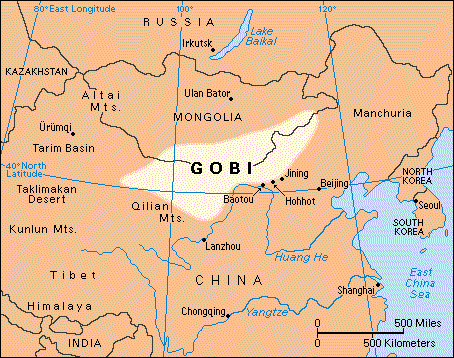
“…are to appear before the destruction of the world’, says the one [faith] — ‘before the end of Kali Yuga say the others.”
♥
Earth’s Heartbeat
Its origins lie in the very beginnings of life, Blavatsky explains in The Secret Doctrine (SD II: 400), where the heart of Mother Earth beats
“…under the foot of the sacred Shambalah, which then (in the beginnings) was not yet born.”
š
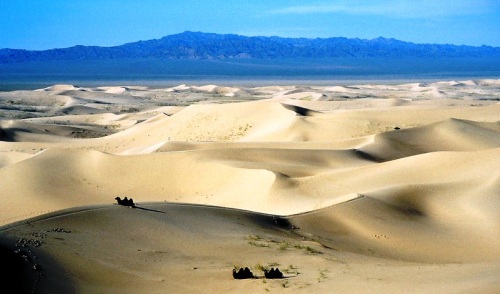
The Sacred Island
She also tells us, in The Secret Doctrine (SD II 319), that the continent of Lemuria’s elect had “taken shelter on the sacred Island…in the [current] Gobi Desert….”And Master K.H. reveals (Mahatma Letters, 155) that the inhabitants of Shambhala, “when yet an island in the Central Asian Sea,” were called the “Sons of the Fiery Mist” who triumphed over
“…the selfish but not entirely wicked magicians of Poseidonis….”
≈
“Read in this connection,” K.H. suggests, “the incomplete and partially veiled tradition, in Isis, Volume I, p. 588-94.”A Scientific View
I’ve always wondered about the island of Shambhala and the notion of an ocean in the Gobi Desert. Is there any geoscientific evidence for this?Some years ago, I asked a professor at UCLA’s Department of Earth and Space Sciences this question and he said that the Gobi Desert, which spans areas of China and Mongolia, had indeed been covered by water at one time! So, the legend can be substantiated.
But it would be Nicholas Roerich who would lead a five-year scientific and artistic expedition of Central Asia in 1923 — the first expedition to cross the Tibetan Highlands, north to south, from western China to India.
A noted archaeologist and artist, Roerich was the first to capture the magnificence of the Himalayas — the subject of a number of his 7,000 paintings.Roerich was also the first Buddhist nominated for the Nobel Peace Prize.
Ω
Roerich:
Darjeeling 1928
RoerichArchery_Darjeeling_1928
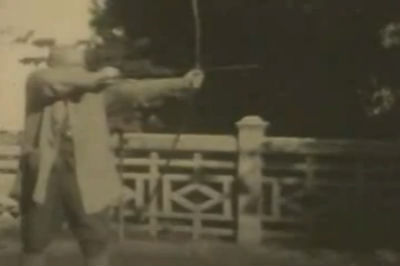

“The Messenger”
About the same time William Quan Judge first met Helena Blavatsky in New York City in the fall of 1874, Nicholas Roerich was born in St. Petersburg, Russia. After arriving in the US in 1920,Nicholas and his wife, Helena, became dedicated Theosophists, and Helena translated The Secret Doctrine into Russian.
∏
Roerich’s Artistic Tribute
to Helena Blavatsky
(click for larger view)
Their 15,500-mile journey throughout Asia, taking their sons with them, was an extraordinary and dangerous adventure involving, for example, the crossing of 35 mountain passes from 14,000 to 21,000 feet in elevation.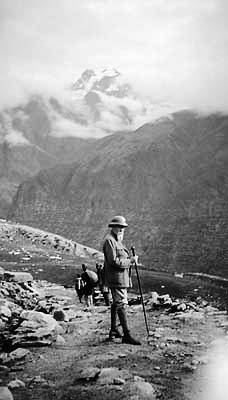
Roerich at Kulu Lahul 1931-32
…”believing that the rigor of the mountains helped a man to find courage and develop strength of spirit.
“And in spite of obstacles, wherever they went
…the Roerichs’ belief in the essential goodness of life and the spirituality of man was reinforced.”
Ö
Agni Yoga
Nicholas and Helena Roerich co-founded the Agni Yoga Society, headquartered in New York City. Their sons, Tibetologist George Roerich (a.k.a. Yuri Roerich) and artist and herbalist Svetoslav Roerich blazed new trails of their own. 
Roerich Family
Nicholas Roerich – Vangelis
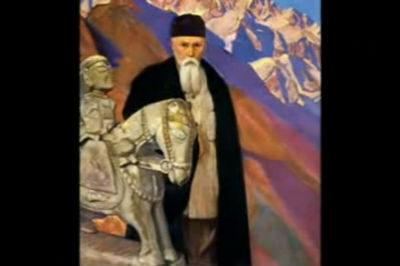

FDR, The Gobi,
and Climate Change
The expedition was funded by the U.S. Department of Agriculture and organized through the help of then Secretary of Agriculture Henry Wallace (later, vice president with FDR), a student of Roerich. One of the purposes was to gather samples of drought-resistant grasses for the Great Plains areas. 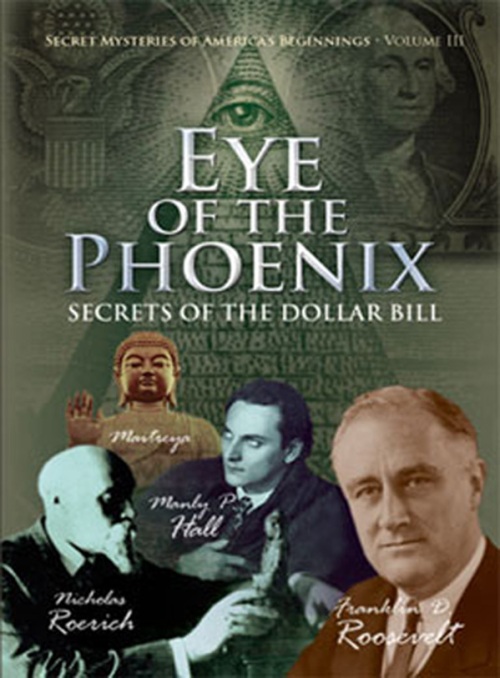
When they found out, however, that a Russian familiar with the Gobi Desert was leading the expedition instead of one of them, they expressed xenophobic resistance in complaining.
š
But it was President Roosevelt himself who proposed the expedition as he believed that trees at one time grew in the Gobi Desert and that when the trees were cut down, the climate changed. If trees could be grown there again, he thought, it would correct the climate.But for the Roerichs and Wallace, the expedition also meant the possibility of finding Shambhala.
š
Wallace would later be scandalized when he ran for president by an ultraconservative journalist who published some of Wallace’s personal letters to Roerich, dubbing them “The Guru Letters.” What the journalist missed was the secret file President Roosevelt kept of his correspondence with Roerich’s wife, Helena.Roerich’s Shambhala
Nicholas Roerich chronicled their Asian travels in a number of works, including Altai-Himalaya: A Travel Diary, Heart of Asia, and Shambhala.“Shambhala itself is the Holy Place, where the earthly world links with the highest states of consciousness,” he explains in Heart of Asia.
“In the East they know that there exists two Shambhalas – an earthly and an invisible one.”
š
“The Greatest and Holiest of Tangla” from Roerich’s Shambhala series:In their search for Shambhala, the Roerichs travelled to Inner Mongolia. Roerich had been a student of the Mongolian Lama Agwan Dorjeff in the early 1900s and the Roerichs lived in Ulaanbaatar, Mongolia in 1926-1927.
The Roerichs’ oldest son, George (1902-1960), was an accomplished scholar in Tibetan studies. One of his many great contributions was the translation of a 15th century Tibetan Buddhist text called The Blue Annals — almost 1,300 pages in length.
Roerich Mongolia Museum Opening Celebrations
When his oldest living student, Mongolian Professor Shagdaryn Bira, was studying an old photo of the Roerichs in front of their home in Ulaanbaatar, he determined to find it and he did. Professor Bira and a group of supporters saved the house from demolition, restored it, and dedicated it as a museum and art gallery this past summer.
RoerichMongoliaMuseum_Restore_NorthWall
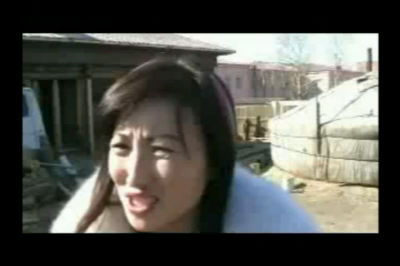

Another Tibetan scholar and practitioner Glenn Mullin (aka Lama Glenn), a Canadian who now resides in Mongolia, is promoting the museum project and a symbolic shrine and temple to Shambhala. Sometimes Lama Glenn comes to the Washington, D.C. area for delightful talks and teaching.
Below a short video of Part 1 of a meeting organised by Glenn Mullin with Telo Tulku Rinpoche in the restored Roerich Museum (Ulan Bator, Mongolia. July 2009.)
Telo_Tulku Rinpoche_Roerich_Museum_Mongolia_Part_1
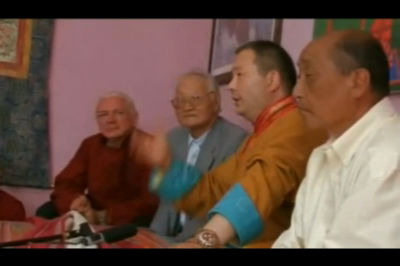

Rhythm of Shambhala

Nicholas and Helena Roerich
“Trace how the word Shambhala is uttered in the East. Try to penetrate, even in a small way, into the ideology of this concept. Try to understand the rhythm of structure of speech about Shambhala, and you will perceive a great reality which causes the harp-strings of humanity to vibrate. Let reason help you to ponder on the values accumulated by the best strivings.”
_____________________________
By Kara LeBeau© Kara LeBeau 2009 All rights reserved
To learn more and watch videos, visit
Roerich Mongolia.
Illustrations by Roerich
Other Links:
(1) Nicholas Roerich Museum, New York City(2) Nicholas Roerich Paintings – His Country
From a Series of paintings by the same name plus some extras by the Russian artist Nicholas Roerich (1874-1947) with music played on Tibetan Singing Bowls, plus (around halfway through)Gongs and Cymbals by Frank Perry.
(3) Paintings: Nicholas Roerich (1874-1947)
(from Nicholas Roerich Museum in New York and Latvian Roerich Society).
Music: Alberto Grollo ”Anahata” and ”Adjna” from the album ”Chakra Healing Energies”
(4) Secrets of Shambhala
Inspired by and featuring the Artwork of Nicholas Roerich, a true artist
(5) Nicholas Roerich
http://theosophywatch.com/2009/11/09/roerich%E2%80%99s-shambhala/



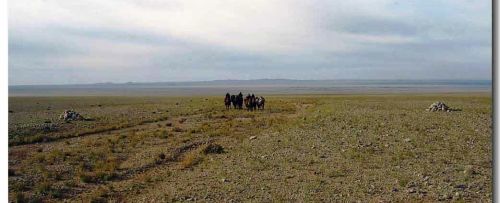
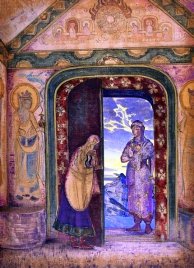
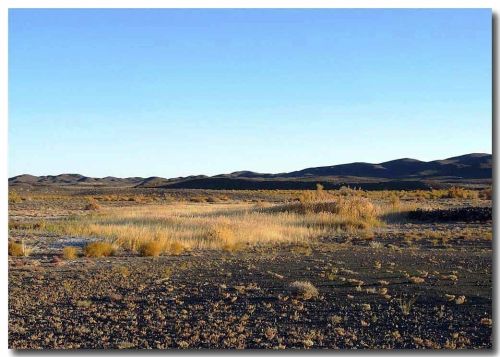
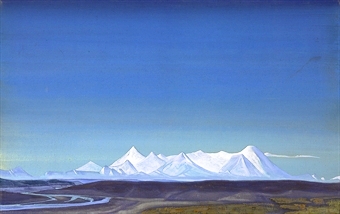
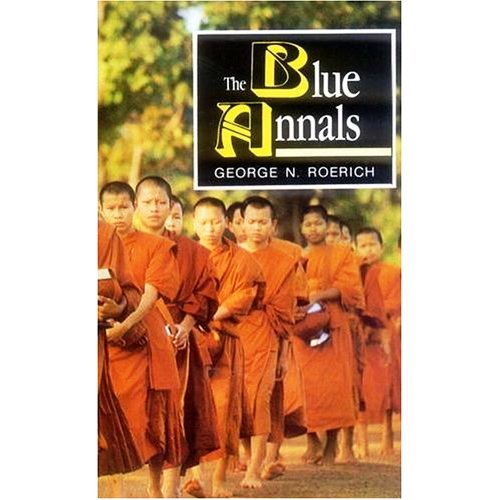
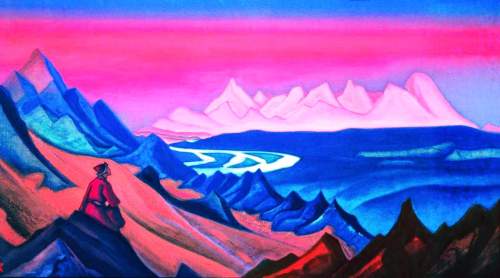
No comments:
Post a Comment